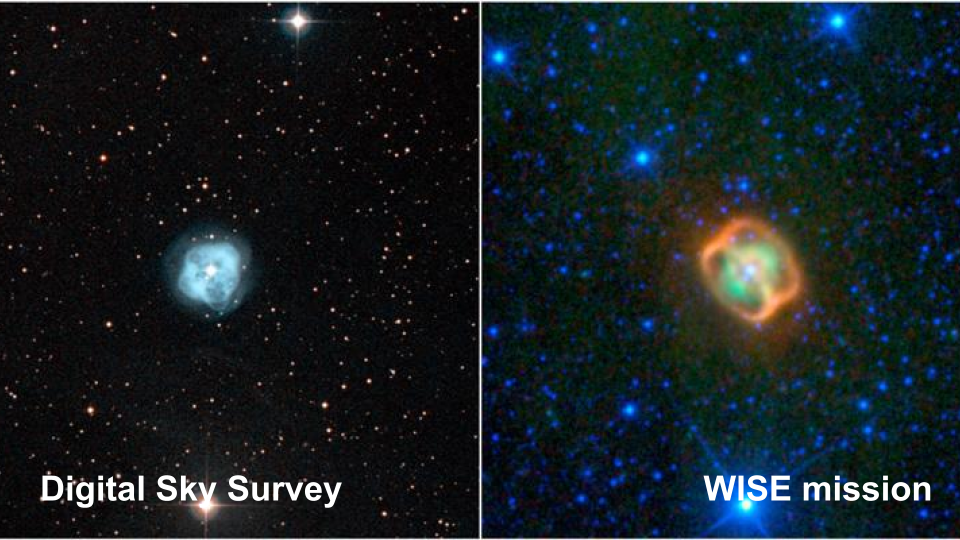
One of the justifications for building the Hubble Space Telescope was to finally get a detailed enough view of the fuzzy blobs we call planetary nebulae that we could finally understand what is going on.
Turns out, for some of the nebulae, we actually needed something even better than HST – and that “better than” is the JWST.
First catalogued in 1790 by William Herschel, NGC 1514 is a binary star system surrounded by a glowy blob of stuff. One of the stars is actually a stellar remnant – a hot white dwarf that has shed its atmosphere and stopped undergoing nuclear reactions in its core. Once upon a time, this was the larger of the two stars, but in its death, it transferred a lot of its mass to the system’s surroundings. The other star is a bluish giant star that is clearly visible in the center of the nebula.
The heat from the two stars heats the lost mass to shine bright in the infrared, where it looks radically different from the spiralgraph cloud we see in optical light. Our first good look came from the WISE Space Telescope, which revealed a pair of rings. This distinctive shape is in part an optical illusion. There is actually a flattened hourglass of material, that is pinched in the center by the stars’ orbital disk. The bands we see are the edge of the bubbles, and this is actually a pretty common shape.
WISE’s fuzzy blob wasn’t entirely satisfying to folks trying to understand the details of stellar death.
So, JWST took its turn and wow. Just wow.
In the new images, we see the warm dust of the hourglasses edges, and sides. The wasp waist is hard to see even in this image, but if you follow the white boundaries and look at the curved in orange dust you can see it. In the center, the lumpy pink nebula is heated oxygen.
This system is one that will only last for the blink of an eye on cosmic scales. Over time, the dust and gas and the white dwarf star will cool and fade, and the material will continue to drift away across the millennia, but then, this system will do something kind of awesome. It will form a second nebula as that second star exhales its own atmosphere and evolves into a 2nd white dwarf star.
And who knows…maybe one day the two white dwarfs stars will also merge and explode and create yet a 3rd artistic moment of glory.
Our universe loves change.
